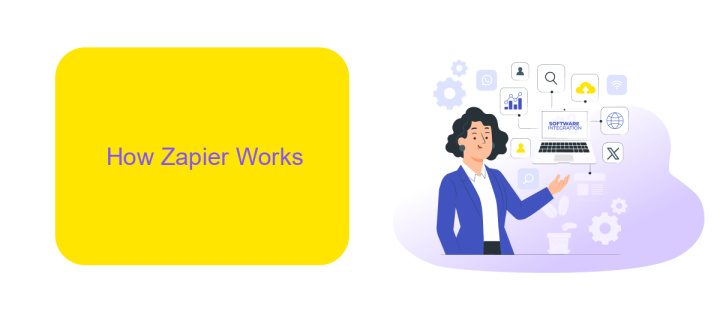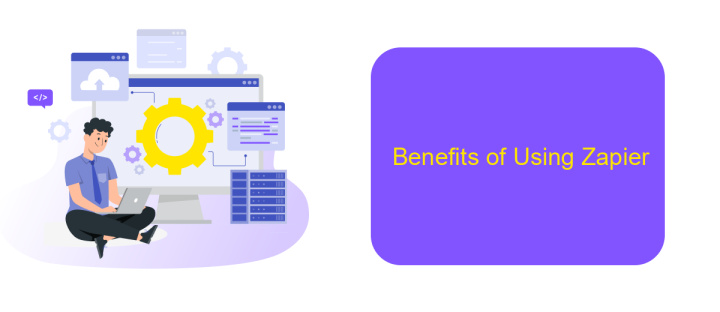What is Zapier Interfaces
Zapier Interfaces is a powerful tool that allows users to create custom workflows and automate tasks across different applications without any coding knowledge. By connecting various apps and services, Zapier Interfaces streamlines processes, enhances productivity, and saves time. Whether you're a small business owner or a large enterprise, this tool can help you optimize your operations and achieve seamless integration.
What is Zapier?
Zapier is a powerful automation tool that connects your favorite apps and services, enabling them to work together seamlessly. By creating automated workflows called "Zaps," users can save time and reduce manual effort on repetitive tasks. With Zapier, you don't need any coding skills to create integrations between different platforms.
- Automate repetitive tasks
- Connect over 3,000 apps
- Create custom workflows
- Save time and increase productivity
Unlike other integration services like ApiX-Drive, which also offers robust solutions for connecting apps and automating tasks, Zapier focuses on ease of use and accessibility for non-technical users. Whether you're looking to streamline your email marketing, manage customer relationships, or automate data entry, Zapier provides a user-friendly interface to set up your Zaps quickly and efficiently.
How Zapier Works

Zapier operates by connecting various web applications through automated workflows known as "Zaps." Each Zap consists of a trigger and one or more actions. When an event occurs in one app, it triggers an action in another app, streamlining processes and reducing manual effort. Users can create Zaps using a simple, user-friendly interface without needing any coding skills. This enables businesses and individuals to automate repetitive tasks, saving time and increasing productivity.
To set up these integrations, Zapier offers a wide range of pre-built templates and supports numerous apps across different categories. For more advanced customization, services like ApiX-Drive can be utilized. ApiX-Drive provides additional tools and features to fine-tune integrations, offering greater flexibility and control. By leveraging both Zapier and ApiX-Drive, users can create robust, automated workflows tailored to their specific needs, ensuring seamless data flow between applications.
Types of Zapier Interfaces

Zapier offers a variety of interfaces to streamline your workflow automation. These interfaces are designed to cater to different user needs, ranging from simple tasks to more complex integrations. Understanding these interfaces can help you choose the right one for your specific requirements.
- Zap Editor: This is the primary interface where users create and manage their Zaps. It provides a step-by-step guide to set up triggers and actions, making it user-friendly even for those with no coding experience.
- Zapier Dashboard: The dashboard offers an overview of all your Zaps, including their status and performance metrics. This interface is crucial for monitoring and troubleshooting.
- Zapier CLI: For developers, the Command Line Interface (CLI) allows for more advanced customization and integration. It provides tools to build and manage Zaps programmatically.
- Zapier Interfaces with ApiX-Drive: This integration allows users to connect various applications and services effortlessly. ApiX-Drive enhances Zapier's functionality by providing additional options for data transfer and automation.
By leveraging these interfaces, users can optimize their workflows, automate routine tasks, and focus on more strategic activities. Whether you're a beginner or an advanced user, Zapier has an interface to suit your needs.
Benefits of Using Zapier

Zapier provides a seamless way to automate workflows by connecting various applications without the need for coding. This not only saves time but also reduces the potential for human error in repetitive tasks. By streamlining processes, businesses can focus more on strategic activities rather than mundane operations.
One of the key benefits of using Zapier is its extensive library of integrations, supporting thousands of applications. This makes it incredibly versatile and adaptable to virtually any business need. Whether you are looking to integrate your CRM with your email marketing software or automate data entry tasks, Zapier can handle it with ease.
- Time-saving automation of repetitive tasks
- Reduces human error
- Supports thousands of apps for versatile integrations
- Easy to set up without coding knowledge
- Improves overall business efficiency
Moreover, for those who seek even more specialized integrations, services like ApiX-Drive can complement Zapier by offering tailored solutions. ApiX-Drive provides additional functionalities and custom integrations, ensuring that businesses can achieve their specific automation goals with precision. Together, these tools empower businesses to operate more efficiently and effectively.
Use Cases for Zapier
Zapier is an incredibly versatile tool that allows users to automate workflows by connecting different apps and services. For instance, businesses can use Zapier to automatically transfer data between CRM systems, email marketing platforms, and project management tools. By setting up these automated workflows, companies can save time, reduce manual errors, and ensure that information is consistently updated across all platforms.
Additionally, Zapier can be used in conjunction with services like ApiX-Drive to further enhance integration capabilities. ApiX-Drive offers a user-friendly interface for setting up complex integrations without needing extensive technical knowledge. By combining Zapier's automation features with ApiX-Drive's integration tools, businesses can create highly customized workflows that cater to their specific needs. This synergy enables seamless data flow and operational efficiency, making it easier for organizations to focus on their core activities.
FAQ
What is Zapier Interfaces?
How does Zapier Interfaces help in workflow automation?
Can Zapier Interfaces integrate with other automation tools?
Is coding knowledge required to use Zapier Interfaces?
What are some common use cases for Zapier Interfaces?
Do you want to achieve your goals in business, career and life faster and better? Do it with ApiX-Drive – a tool that will remove a significant part of the routine from workflows and free up additional time to achieve your goals. Test the capabilities of Apix-Drive for free – see for yourself the effectiveness of the tool.

